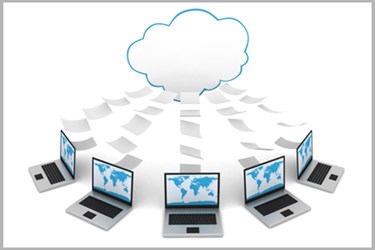Do You Make These Mistakes Selling Cloud Backup?


Are you struggling to see the profits you expected when you added cloud-based backup services to your portfolio? During a recent interview with Business Solutions for the article, “Don’t Assume Your Salespeople Can Sell Cloud Backup,” two industry leaders explained that there are common mistakes MSPs make when it comes to implementing and selling these services that might be standing in the way success.
Eran Farajun, executive VP of Asigra, commented that some of the mistakes MSPs make occur far before the first sales call. “One common mistake is not identifying the ‘what,’ ‘why,’ and ‘how’ prior to adding cloud backup to your portfolio,” says Farajun. “It is not about the technology, it is about the business objectives and how they are going to go to market with the solution to capture market share and increase your total addressable market.”
He stresses the importance of developing a business plan for offering cloud-backup services that defines business objectives. A business plan can vary from MSP to MSP, depending on whether cloud backup is the only service the company sells, the leading service it sells, or just one of many solutions in the company’s portfolio. The company’s business model will dictate how the company prices its cloud backup solution and go-to-market strategy.
“Unfortunately, many service providers do not determine their business objectives or business model first prior to going to market, therefore, they don’t have a clear way to measure their success,” Farajun says. “And, they may experience a few fumbles before getting it right, because they did not complete the necessary up-front work before deciding whether or not offering a cloud backup solution fits within their business model or whether they need to make changes to support a recurring-revenue model.”
Another common mistake by MSPs is not establishing a marketing plan because it’s not their area of expertise. Farajun says service providers are often technology-focused and tend to hire sales or technical professionals rather employing marketing resources. He says referral and reference selling might be familiar, but they don’t scale to selling cloud backup services. “They need to invest in the right marketing talent to execute demand generation and awareness programs to create interest and promote their cloud-backup solution within the market,” Farajun says. With regard to sales, he adds it’s important to have the right compensation model in place that rewards selling recurring-revenue, cloud-based backup.
Ken Sims, VP of business development at Axcient, says one common mistake he sees MSPs making when they sell cloud backup services is to focus only on backing up data. “Across the country, businesses lose $26.5 billion a year due to downtime. The average SMBs are out of pocket $150,000 if they suffer a major IT infrastructure interruption, such as hardware failure, application corruption, power outage, or natural disaster,” says Sims. “MSPs need to choose a cloud backup solution that actually goes beyond backup and also provides disaster recovery and business continuity to their customers.”
Sims says the best way to prepare for an emergency — in addition to replicating and storing data — is to create a “perfect mirror of business in the cloud, including the servers, laptops, desktops, applications, and all interconnected elements on the network.” He says this will ensure clients never lose data, and applications are always running.
Another mistake Sims sees MSPs making when they try to implement the virtual network he mentioned above is “to integrate a hodgepodge of different solutions from different vendors.” He quotes the statistic that 59 percent of businesses use four or more vendors for full business continuity and disaster recovery, but this has a downside. “This adds risk, complexity, and cost,” Sims says. “One unified, code-based, purpose-built-from-the-ground-up solution enables rapid innovation and quick turnaround on support.”
The third mistake, says Sims, is not using industry-standard hardware for local appliances. “Not only are they more reliable than ‘white box’ solutions, they also enable the MSP to ride the price-performance curve of high-volume manufacturing and get the benefits of Moore's Law.”
Considering Farajun and Sims’ advice — heavy on planning and lining up the right resources — might shed some light on why offering cloud backup isn’t giving your company the expected returns. Why make the same mistake twice?
